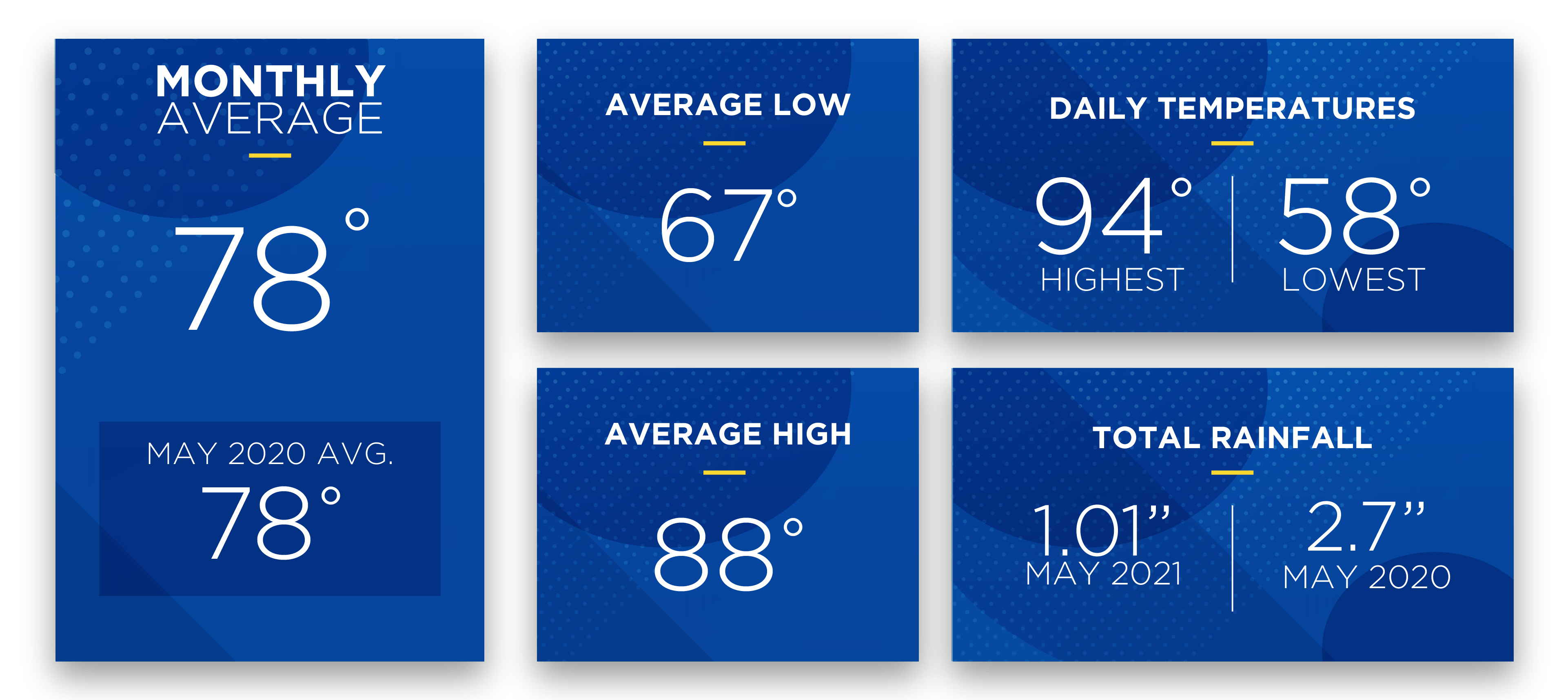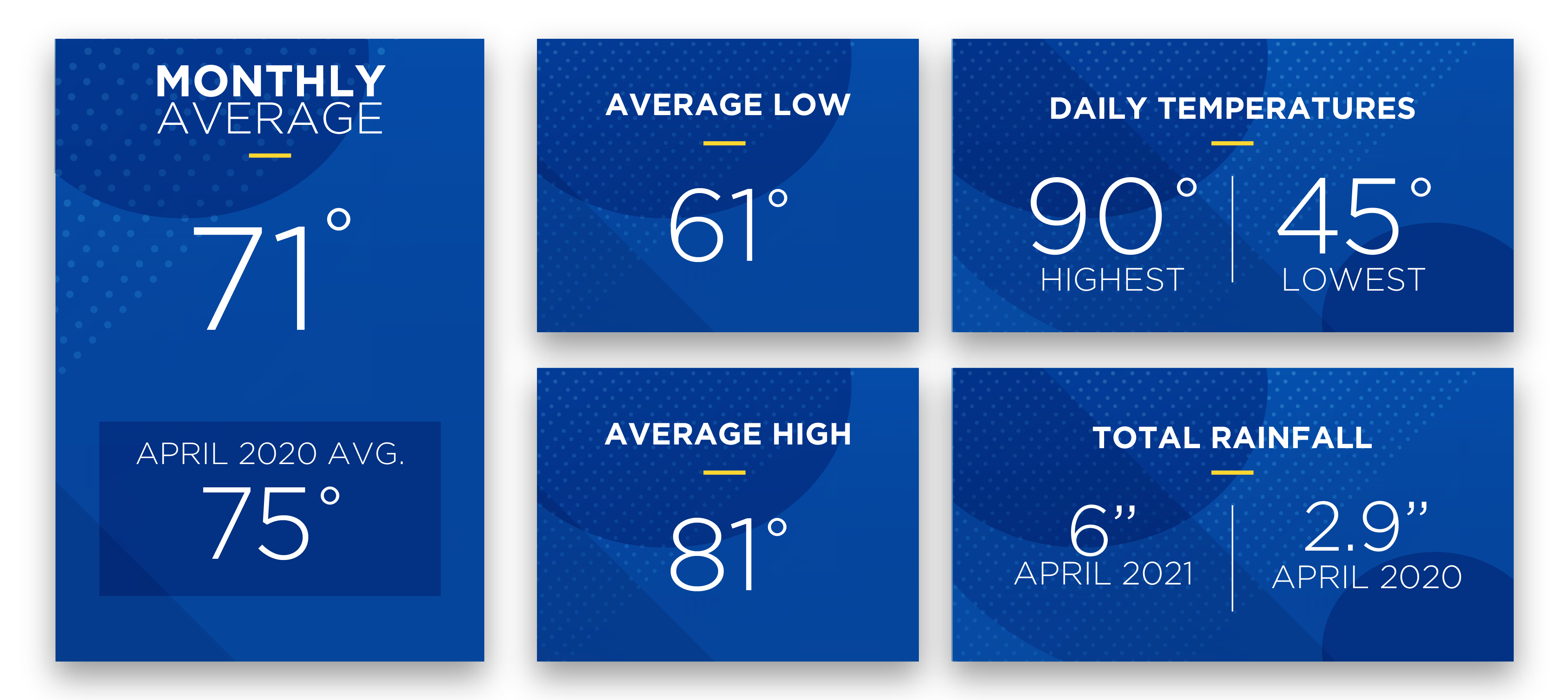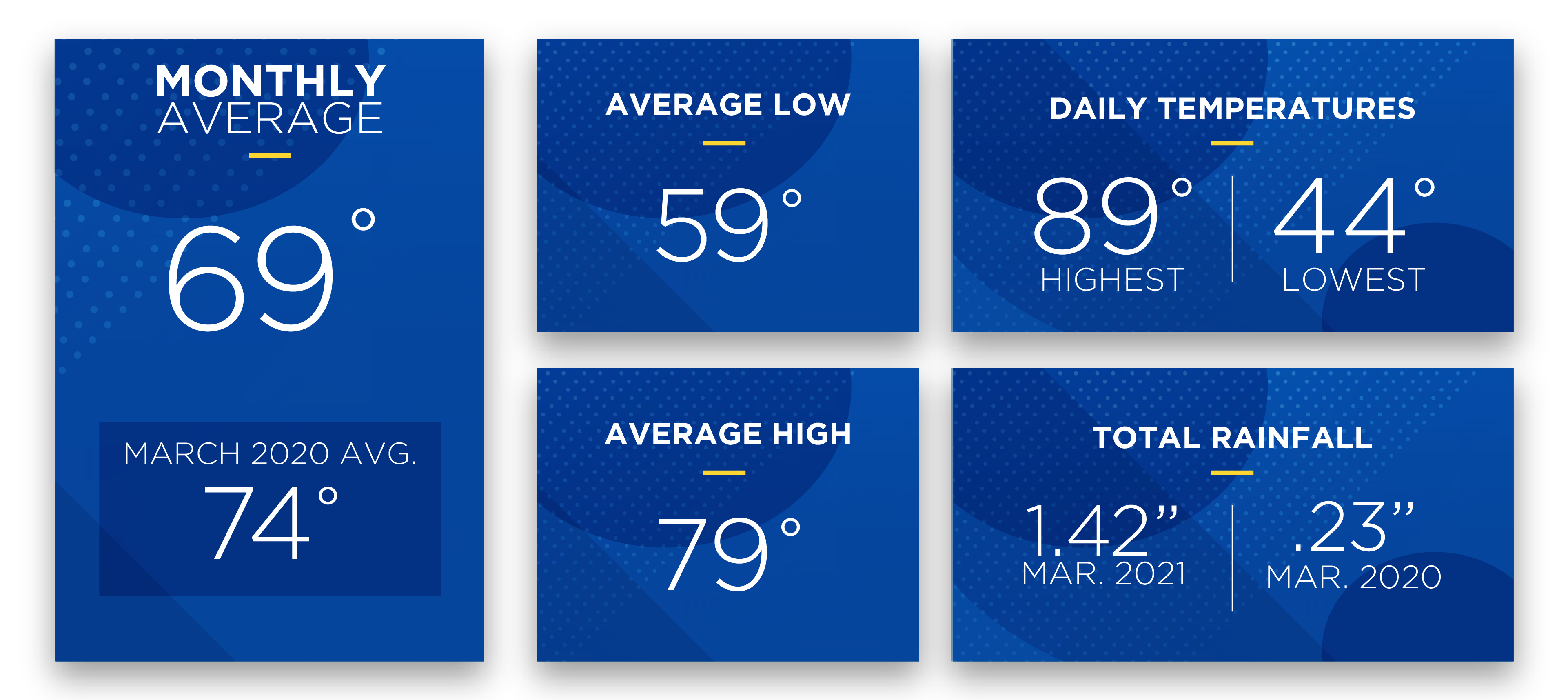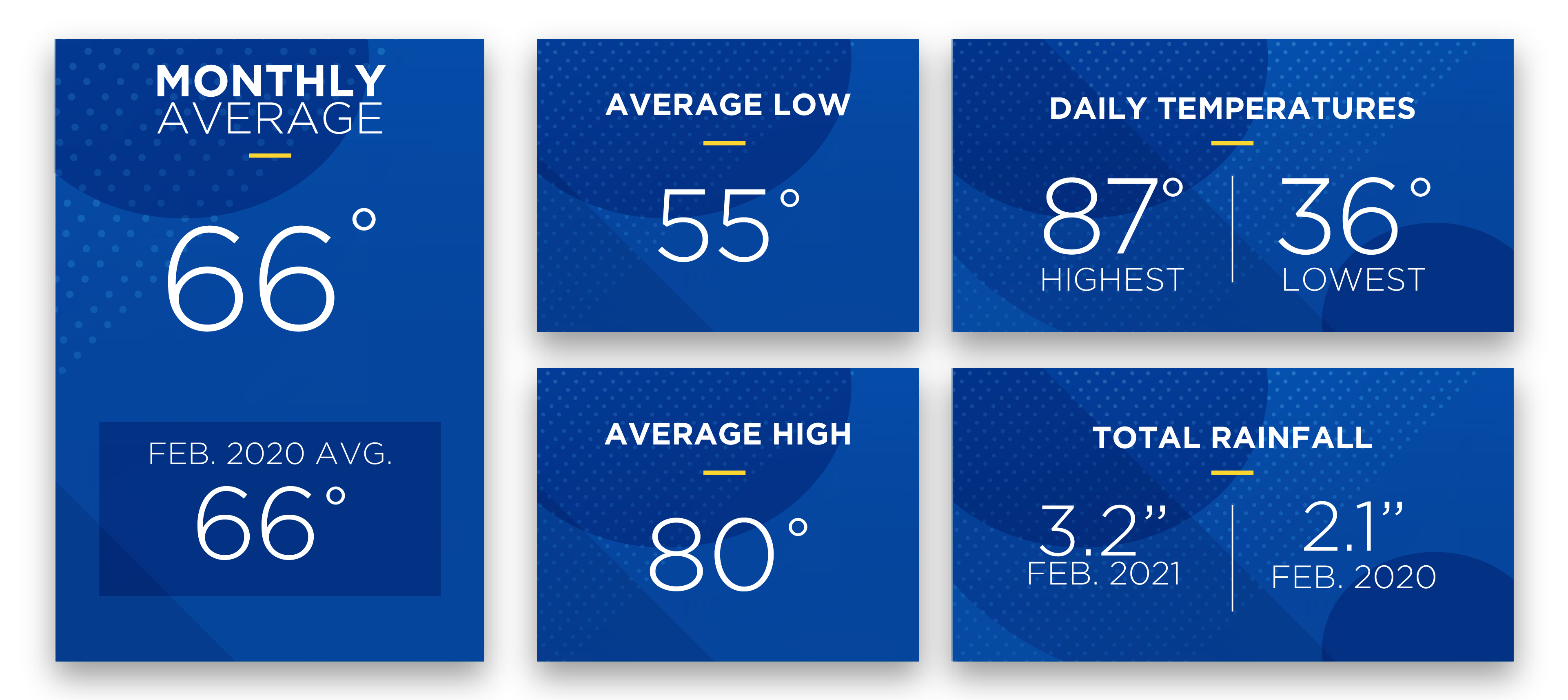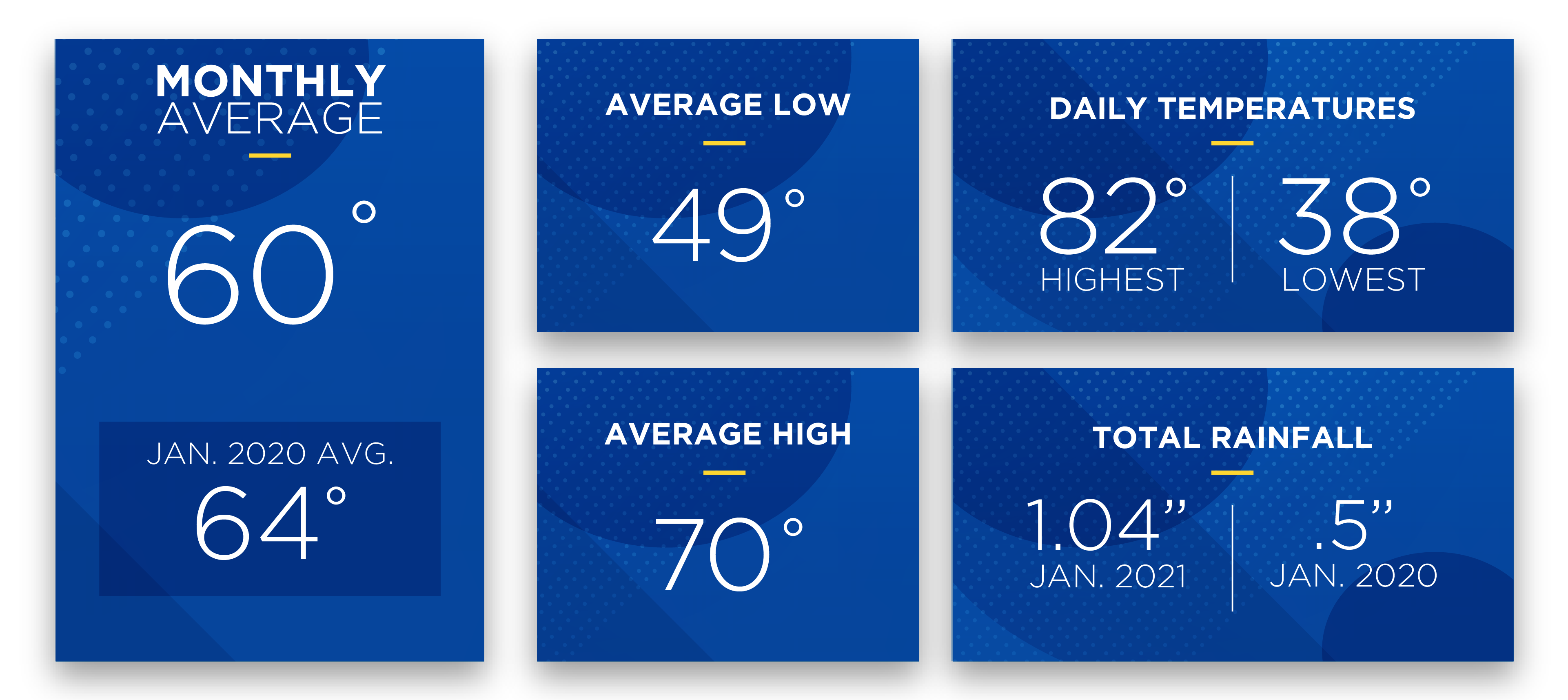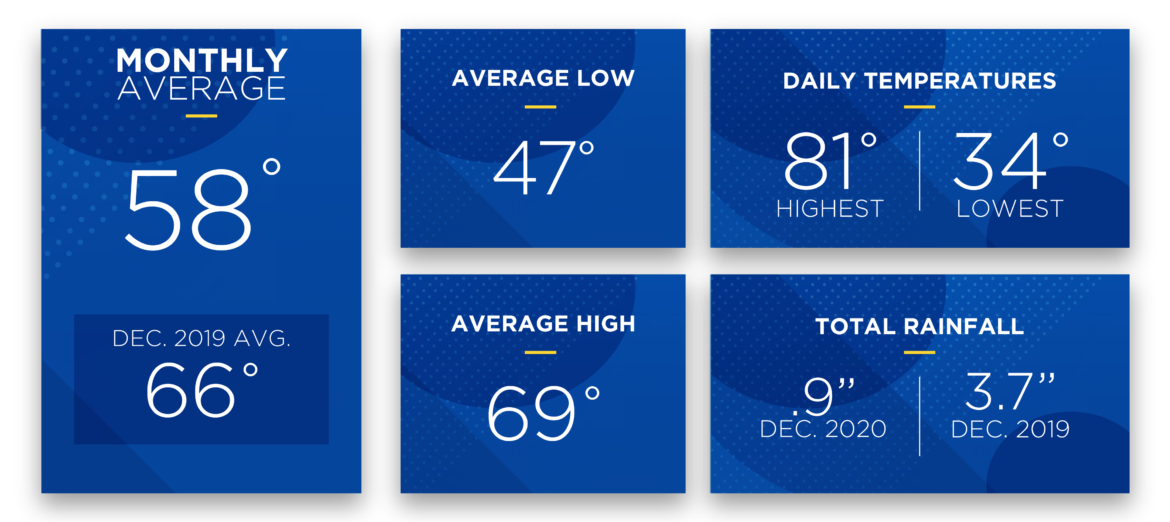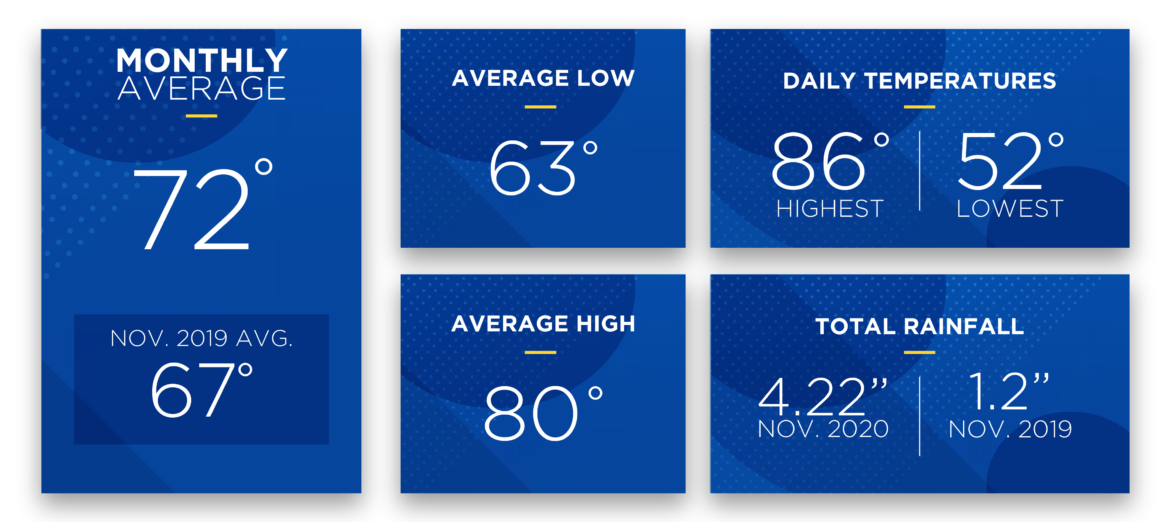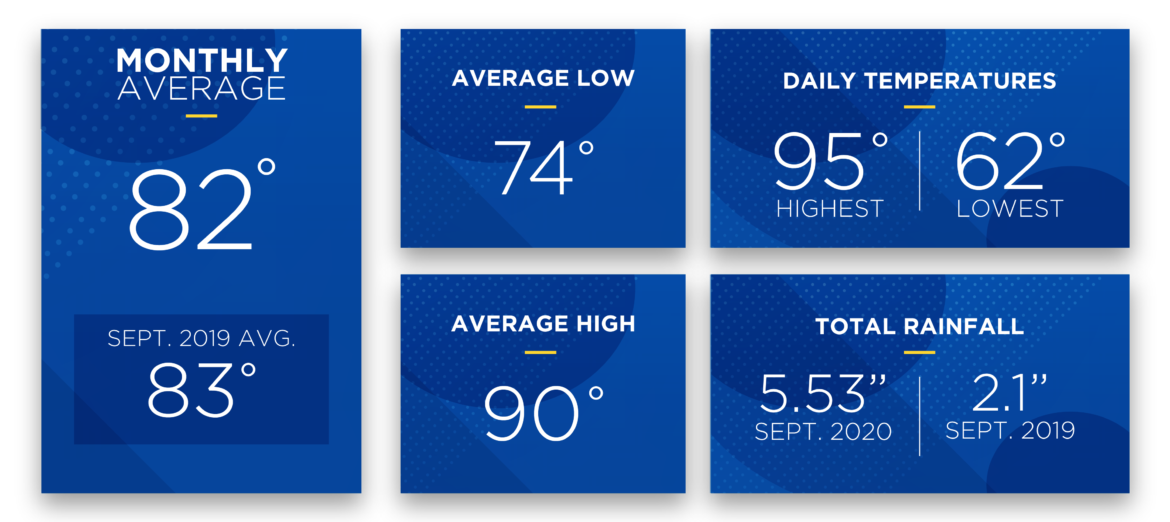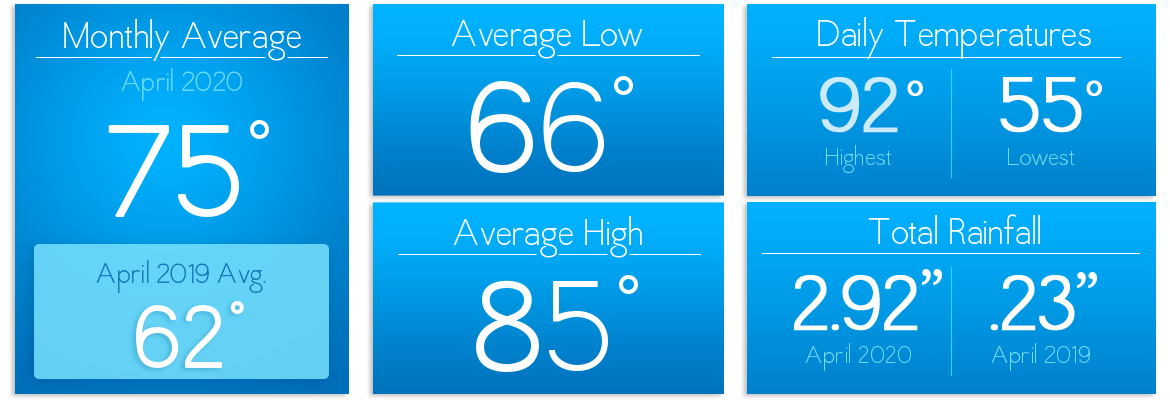May 2021 Sunshine State Stats
May 2021 weather was a study in extremes – the highest daily temperature measured in at 94 degrees, while the lowest temperature came in at 58 degrees. Daily high temps ranged between 94 and 74 degrees, and daily low temps spanned from 74 degrees to 58 degrees. While May was extremely dry with rainfall of only 1.01 inches, which is more than 3 inches below average, the first named storm – Tropical Storm Ana – was named on May 22 before the official beginning of hurricane season.
Hotter temperatures are here to stay. Eleven days in May the high reached 90 degrees or over. Members may notice an increase in their May electric usage due to the higher temperatures during the day that stretch into the evening, and little rain to bring the temperature down.
For May 2021 the average temperature was 78 degrees, which was the same as the average temperature in May 2020. The average high temperature was 88 degrees, and the average low temperature was 67.
Again, members may see an increase in their energy usage for May 2021. Both the average monthly temperature and average low and high temperatures have increased from April 2021. The average temperature is up 7 degrees, while the average low is up 6 degrees, and the average high is up 7 degrees. Hotter temperatures mean HVACs will run for longer periods of time to keep the temperatures cool inside. Daily temperature fluctuations also increase HVAC usage. The highest daily temperature fluctuation in May was 26 degrees.
June forecast:
Florida’s rainy season typically begins in June and this year is no exception. Expect almost daily afternoon thunderstorms with heavy rain and lightning. The Central Florida area received almost 3 inches of rain early in the month. Thunderstorms will continue throughout June. Daily highs will reach 90 degrees and above with lows in the 70s.
Take the bite out of damaging surges and spikes with SECO Energy’s Surge MitiGator surge protection. Our meter-based surge arrester protects large appliances by reducing surges BEFORE they enter the meter. Learn more about the Surge MitiGator.
To check historical usage, log into SmartHub to view past bills and consumption charts. If your usage is high, SECO offers several energy-efficiency tools to help you identify energy wasters. Take the Home Energy Assessment to receive a detailed email tailored to your home’s features and lifestyle. The energy-saving advice will provide low-cost ways to decrease your usage – and your electric bill.
To easily calculate how much energy your appliances, lighting, electronic devices, and other energy-using items in your home consume, use the Energy Estimator.




